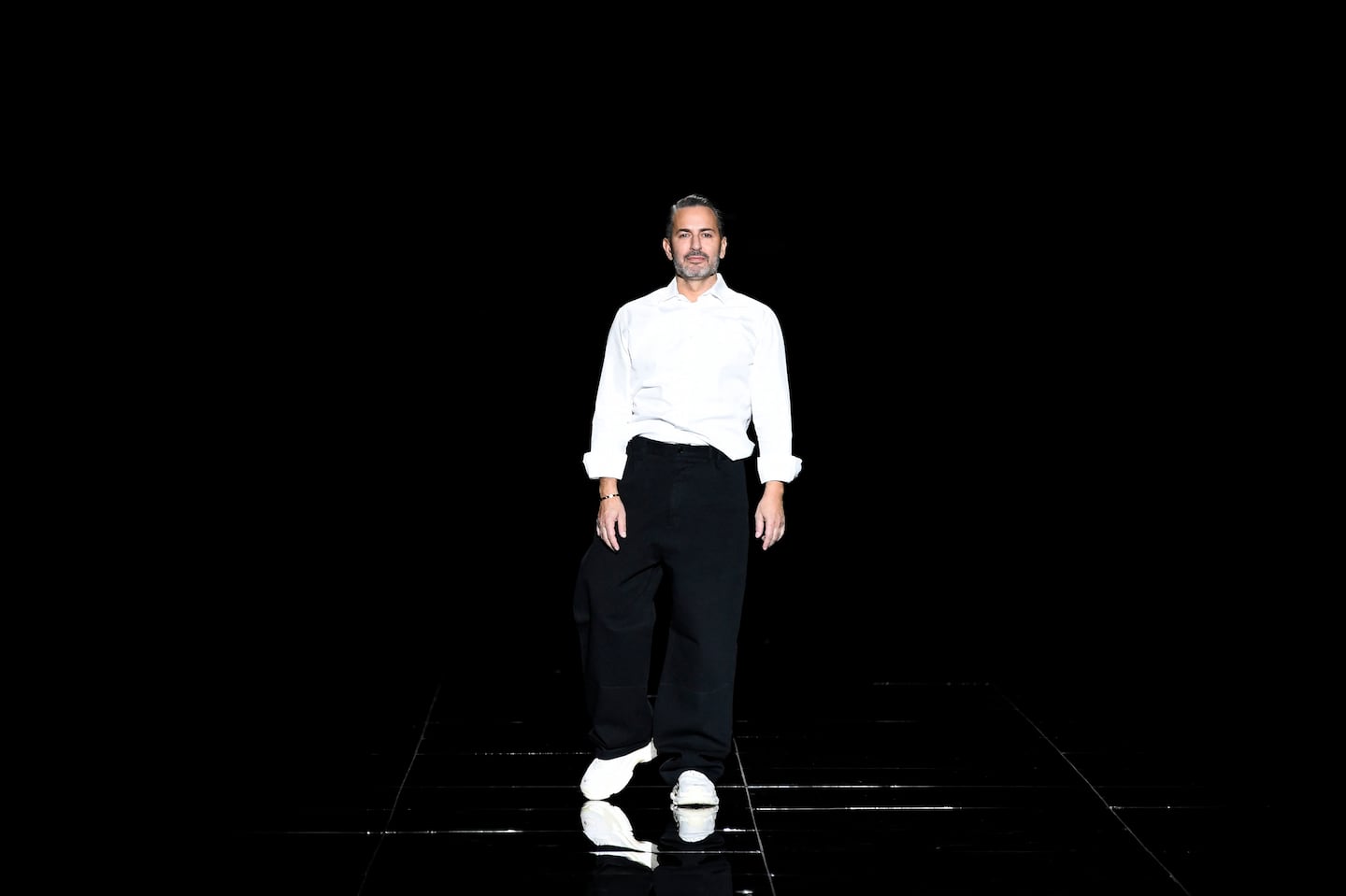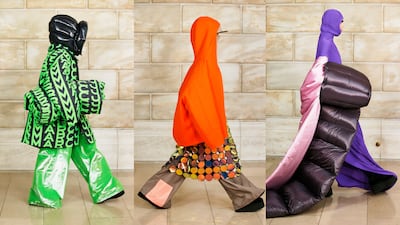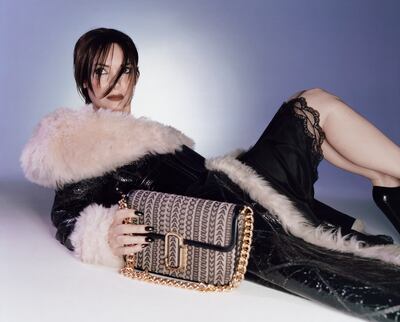
The Business of Fashion
Agenda-setting intelligence, analysis and advice for the global fashion community.

Agenda-setting intelligence, analysis and advice for the global fashion community.

NEW YORK — That 59-year-old Marc Jacobs has become an influencer, speaking directly to his 1.7 million Instagram followers about everything from relationships to plastic surgery, is perhaps no surprise. Many of his peers — including Isaac Mizrahi and Todd Oldham — have also attracted fervent online fans, especially those nostalgic for the 1990s, when fashion designers were idolised like rock stars.
But Jacobs is different.
His followers aren’t just scouring vintage stores and resale sites for rare pieces from his Spring/Summer 1998 collection, or pristine versions of his Stella handbag, first beloved in the mid-aughts. They’re buying new Marc Jacobs as well. Baby tees from Heaven, the youth-driven sub-line designed by art director and digital star Ava Nirui. And tote bags from the main collection.
He’s still staging closely-watched runway shows, too. On Monday, the designer will present his latest at the New York Public Library in Midtown Manhattan, where he remains a hometown hero with the glossy magazine scrum.
ADVERTISEMENT
In fact, the Marc Jacobs label is on the up. While owner LVMH doesn’t break out revenues for its brands, a source close to the business said that sales are up by double-digit percentage points from pre-pandemic levels. Over the next 18 months, the company will open 20 stores.
It’s a long way from 2017, when the future of Marc Jacobs was in question.

The turnaround is the product of a restructuring engineered by chief executive Eric Marechalle, who arrived five years ago from another LVMH-owned brand, Kenzo. Marechalle cut costs, scaling back the brand’s runway collection. He found a way to translate Jacobs’ madcap vision, which the fashion world loves, into something more accessibly priced that still comes off as original and novel, rather than watered down. He’s also managed to layer in new elements, like Heaven.
Add a laser-focused accessories programme, which includes the top-selling “Tote” and “Snapshot” styles, and the company is on track to generate $1 billion in annual sales in the next three to five years. (That’s not including its robust — and still growing — fragrance business with Coty.)
The brand wasn’t always as healthy.
“We were in a situation five years ago that had to change,” Marechalle said during an interview in the company’s Spring Street office building in New York’s Soho neighbourhood.
We were in a situation five years ago that had to change.
For many years, the success of Marc Jacobs the brand was less important to LVMH than retaining Jacobs at Louis Vuitton. (The company often invests in the namesake labels of its top designers as deal sweeteners.) Starting in 1997, Jacobs helped transform Vuitton from an old-world luggage label into a global fashion juggernaut, not only through his well-regarded runway shows but also headline-making accessories collaborations with the likes of artists Takashi Murakami and Richard Prince. (In 2000, Louis Vuitton was valued at $6.9 billion, according to Interbrand’s annual ranking of the “best” brands in the world. By 2014, the year Jacobs exited the brand, it was valued at $22.5 billion.)
The fact that handbags and shoes from the designer’s namesake Marc Jacobs label, as well as its contemporary Marc x Marc Jacobs line, became a major sales driver in the 2000s was icing on the cake. (At its peak, Marc x Marc Jacobs generated around $400 million a year in revenue, according to analyst estimates.)
ADVERTISEMENT
During its first 15-or-so years under the LVMH umbrella, the Marc Jacobs team experimented with retail and product concepts — who can forget the corner store on Bleecker Street that sold branded lipstick pens? Its runway, too, became a talking point: the most anticipated show of the New York season. But as Jacobs — who was living part-time in Paris (for Vuitton) and part-time in New York — faced a series of personal setbacks and Marc Jacobs co-founder Robert Duffy receded from the picture, the label blew through CEOs at a rapid clip.
It wasn’t until Jacobs’ tenure at Vuitton ended that the group began seriously contemplating the future potential of the Marc Jacobs business, which was cruising along but no longer at the height of cool. There was even talk of an IPO.
“Marc Jacobs wasn’t even a $10 million company when we invested in it. Now it’s making a billion euros a year in revenue,” LVMH CEO and Chairman Bernard Arnault said at the company’s annual investor day in 2014. “Marc Jacobs is the most emblematic designer in the United States. [An IPO could mean] that over the next five to 10 years one company could equal a third of the value of the group. You can see the kind of promise all of this holds.”
That year, LVMH brought in Sebastian Suhl, a seasoned executive with successes at Prada, Valentino and Givenchy under his belt, to manage the company’s next phase.
The first thing he did was close Marc x Marc Jacobs, the contemporary cash cow, with the intention of folding the lower-priced collection into the main line. “Collapsing” collections was in vogue at the time. Versace, Dolce & Gabbana and Burberry all made similar moves, with the intention of streamlining operations and sending a unified brand message to consumers.
Suhl’s plan was never to get rid of more affordable pieces, but instead give everything the same point of view, one that had more personality than something that could easily be found at Zara. The change, however, confused wholesale buyers, and many reduced their orders of the collection, which included lots of different products at different price points.
By 2017, the business was suffering, most evident to insiders in the runway shows at New York’s Park Avenue Armory, which were stripped bare of any set decoration to conserve budget. The closure of several Marc Jacobs stores — including its most famous, a converted garage on Mercer Street, and a string of five outposts on a little chunk of Bleecker Street in the West Village — made it even more clear that the company was in trouble.
“I’m more concerned about Marc Jacobs than the U.S. president,” Arnault said on a January 2017 earnings call, one week after Donald Trump was sworn into office.
ADVERTISEMENT
Suhl was out, replaced by Marechalle, who was credited with transforming Kenzo into a youth-driven, contemporary-priced label designed by Opening Ceremony’s Humberto Leon and Carol Lim.
But Marechalle’s early moves backfired. In early 2018, he hired John Targon, a designer best known for co-founding knitwear label Baja East, to create a new, lower-priced collection. Targon lasted all of three months. (Olympia Le Tan, the French accessories designer who popularised embroidered book clutches, was quietly inserted into the mix and stayed a while longer, only to be laid off at the beginning of the pandemic.)
LVMH could have simply closed the brand, or even sold it off, as it did with the underperforming Donna Karan International. But Marc Jacobs was still widely known and widely beloved by fashion obsessives. Closing or disposing of it could be a reputational risk. What’s more, its fragrances were still bestsellers, generating hundreds of millions of dollars a year in sales. And its positioning was still a better fit for LVMH than Donna Karan.
Marechalle’s plan, in some ways, was in line with the label’s history. Going back to the 1980s, when he sold a “junior” collection at Macy’s, Jacobs has almost always offered some sort of accessibly priced product, whether that was a full collection or cleverly branded tchotchkes.
However, LVMH’s track record with US-based apparel brands is not great. In the late 1990s, it invested in Michael Kors, Donna Karan International and Marc Jacobs, selling off Kors long before it peaked and Donna Karan in 2016 after several failed attempts at revitalisation. But with the retooled Marc Jacobs, the group seems to think it’s finally figured the market out.
“In America, we expect brands to be more democratic,” Marechalle said. “A broader audience can buy it.”
Sidney Toledano, CEO of the LVMH fashion group, which includes Marc Jacobs, further explained the strategy. He mentioned Ralph Lauren, which makes high-end clothes, but generates a good portion of its revenue from $95 polo shirts.
“It’s hard to be a luxury [fashion] brand in the United States, unless you are, frankly, imported,” Toledano said, noting that ready-to-wear businesses take decades to build in luxury, and having close access to expert ateliers, but also manufacturing, makes it more manageable in Europe. In the US, where high-end manufacturing is all but dead, “it’s hard to develop.”
The more democratic approach comes at a time when the market needs it, said retail consultant Robert Burke. Today, contemporary-priced brands like Ganni and Tibi are thriving: the difference between the old way and the new is that they are billing themselves as designer-driven rather than trend-driven. And demand for new brands is high.
“There’s a big void right now in affordable, interesting fashion,” Burke said. “This path [for Marc Jacobs] makes a lot of sense to me.”
But how did Marechalle pull it off? His first goal was to better link Jacobs’ still-admired runway collections with what was sold in stores.
“When Marc’s doing a show, his pieces are extraordinary, but it’s not very accessible,” he said. “What we’ve improved a lot is our capacity to develop this commercially viable product that is really in Marc’s vision.”

The main collection, priced as accessible luxury — or contemporary — was rebranded The Marc Jacobs, filled with products directly riffing on Jacobs’ runway takes. While there were already budget cuts underway, when the pandemic hit in 2020 the company laid off 60 people — including designers and other corporate employees — and shrunk things further. The runway collection was reduced to two seasons, sold exclusively through Bergdorf Goodman.
This could be construed as a major dressing down for Jacobs, whose public identity was, especially at the time, mostly defined by his shows. But both he and Marechalle position it differently: by withdrawing pressure to make the runway commercially viable en masse, Jacobs has no creative restraints.
“That’s classic in terms of the way most designer businesses work,” Jacobs told BoF. “My process hasn’t changed: I basically think about fashion all the time. Now that we focus on smaller [output], it gives me complete freedom to tell a story and say something. We have less resources, yes, but it’s very high-end, without any limitations, and that’s what’s most important.”
The new mainline may have been tweaked to better serve Jacobs’ fanbase, but was there a way to attract a new generation of consumers? A third collection — Heaven — was developed by Nirui, a Brooklyn-based creative who had become known for her one-off, “bootleg” items — a Barbie dressed in a “Prada” polo neck, a pair of Nike Air Max made from bullet-proof nylon — as well as an interest in Jacobs’ early designs. Nirui drives the aesthetic, using her own circle of image makers and collaborators, like the illustrator Ancco or video director Hideyuki Tanaka, rather than Jacobs’ go-to’s.
“It’s really Ava’s baby,” Jacobs said. “What’s interesting to her about our past and our history … feels fresh and new. In a way, it’s like Marc x Marc, but I don’t really have much interaction. Ava really has a very specific community of creative people who are outside of this company.”
Today, Heaven is a fast-growing piece of the business, but it is its popularity among young people that makes it so valuable to the overall brand. Pieces regularly sell out and can be found on online secondhand retailers like Depop, often for far more than they were originally priced. (A $185 cropped, broken-stripe cardigan — sold out — is currently listed on the marketplace for $500.)
Searches for “Marc Jacobs Heaven” have increased by 67 percent in the last year, according to Agustina Panzoni, the platform’s trends and category manager, with searches for the label’s “teddy” logo tee — worn by Olivia Rodrigo and Bella Hadid — up 35 percent over the past six months.
Panzoni noted that Heaven also dovetails the emerging “weird girl” aesthetic on TikTok — all reminiscent of Jacobs 1990s, early-2000s heyday, when his own look, and the looks he was creating as a designer, were deeply reflective of the skate and underground youth culture of the time.

Cultural relevance is critical, but so is a successful accessories business. For the first time in several years, Marc Jacobs is making popular bags, with accessories its fastest-growing product category.
The Snapshot, a cross-body camera bag, was for many years the label’s best-selling product, followed closely by a simple $250 tote, with “The Tote: Marc Jacobs” printed in its signature font, an unforgettable spin on Engravers Gothic. Now, the Tote — rendered with Jacobs’ signature humour and lightness — has eclipsed the Snapshot as the top seller. These are not the thousand-dollar-plus bags Jacobs used to sell, but again, the focus is on reaching many rather than a privileged few. And with something like the Snapshot, the silhouette feels unique to Marc Jacobs, an almost impossible task to pull off in handbag design, where nearly everything is referential.
Beauty, probably the most stable element of the business over the past decade, is also evolving. In the past, a brand like Jacobs’ could have subsisted on fragrance sales alone, and it remains a pivotal part of the business. Marc Jacobs fragrances generated more than $39 million in the first four months of 2022 in the US, up from $36 million during the same period in 2021, according to NPD data shared by a source who requested anonymity because the information was confidential. It’s the ninth-best-selling fragrance brand in the US, based on that data.
But a much-hyped makeup and cosmetics collection, launched by Kendo, LVMH’s beauty incubator, in 2013, was put on hold in 2021. Marechalle said that it will relaunch, although he wants to approach it in an “innovative” way that makes sense with how he has rebuilt the rest of the business.
Now, Marechalle is expanding on the structure he has put in place. Colour cosmetics will at some point return, the retail network is set to expand and more runway collection retail partners will likely be added beyond the US. Given that the US and Europe — its first and second-biggest markets — are on track, the company is focused on expanding its business in Asia.
For Jacobs, who loves to post the hashtag #gratefulnothateful, it’s a best-case scenario. He gets to keep designing, without many of the pressures that come today with creative director roles. While he said he can “rise creatively to a request from merchandising,” he isn’t a merchandiser himself, and Marechalle doesn’t expect him to be.
“Over the years, we’ve had a lot of CEOs and most of them have done nothing to really grow this business or help this company,” Jacobs said. “I really love Eric, and I’m not just saying that. He allows me the freedom that I so want to do what I do.”
 Opens in new window
Opens in new windowDisclosure: LVMH is part of a group of investors who, together, hold a minority interest in The Business of Fashion. All investors have signed shareholders’ documentation guaranteeing BoF’s complete editorial independence.
The designer presented his first collection since February 2020, amid an uncertain but optimistic time for the city’s fashion industry.
A licensing agreement with the manufacturer ends later this year, fuelling speculation about what’s next for the brand.
Marc Jacobs, Burberry, Dolce & Gabbana and others have cleaned up their brand architecture, unifying multiple sub-labels under a single name — with uncertain results.
The Swiss watch sector’s slide appears to be more pronounced than the wider luxury slowdown, but industry insiders and analysts urge perspective.
The LVMH-linked firm is betting its $545 million stake in the Italian shoemaker will yield the double-digit returns private equity typically seeks.
The Coach owner’s results will provide another opportunity to stick up for its acquisition of rival Capri. And the Met Gala will do its best to ignore the TikTok ban and labour strife at Conde Nast.
The former CFDA president sat down with BoF founder and editor-in-chief Imran Amed to discuss his remarkable life and career and how big business has changed the fashion industry.